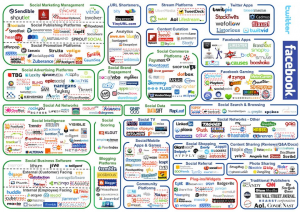
Top IT professionals have no shortage of employment options. They aren’t limited to a “fish or chicken” type of decision. In fact, surveys conducted by Indeed find that 86% of tech hiring managers and recruiters find it challenging to hire, find, and keep technical talent. Superstar talent picks the most appetizing offer from a full smorgasbord of job opportunities. Because of that, industry leaders are revising the way they interview job candidates and putting a greater emphasis on crafting their own sales pitch.
To stay competitive, you need to convince prospects in the passive candidate pool the role is right for them while making the case that their talents are right for you. Here’s how we sell our clients’ brands to potential candidates.
Stick to the 80/20 Rule
Appealing to passive candidates does not require a complete overhaul of your interview process. Only a fraction of the time needs to be sales-centric. The rule of thumb we find to be most effective is the 80/20 rule.
In 80% of the interview, you ask all of the questions that are meant to get the most out of candidates. When hiring managers make their determination that they like the candidate, they should take the extra 20% of the remaining time to start positioning and selling the opportunity. Carving out that time to reinforce your sales pitch is critical.
Think of it this way. In sales, it takes six to eight touches to generate a viable lead, and pitching to passive candidates is no different. Your differentiators need to be as apparent when you interview job candidates as they are in your job advertisements, hiring web page, and follow-up communications.
Get the Right Prep
In sales, you tailor your pitch to the prospect. Researching your target audience in advance of a sales meeting is a given if you want to make any impression. Those sales people who make presentations cold face a clear disadvantage. Passive job seeking is the new norm and the way we interview job candidates needs to coax them out of a comfortable role. That means you need to target their motivation.
Finding what motivates a specific candidate takes time, but plenty of cues on how to pitch to a candidate appear during preliminary research:
- Their Past Projects – Often, you can spot a trend in a candidate’s passion projects from their work history and GitHub repositories. If your business uses their preferred technologies and tools regularly or even offers opportunities to immerse in their favorite types of projects, that needs to be made evident in your pitch. Candidates that can visualize themselves in the role are more likely to check their reservations at the door.
- Their Work History – Patterns emerge if you look at a candidate’s work history. What do they value? Is it certain types of challenges? A prestigious reputation? Specific work environments? A set of values? Though this requires a bit of interpretation, hiring managers verify their hunches with a few well-placed questions. From there, it shouldn’t take much effort to tweak selling points as you interview job candidates.
Be Transparent
Lasting employment relationships are founded on a feeling of mutual trust. Baby Boomers, Gen Xers, and Millennials all want to work for companies that fulfill promises and deliver value to them individually. Hiring managers that present their company and their intentions in a straightforward way early on build a reservoir of goodwill. That’s especially important since it might be the difference between a candidate remaining available or accepting another offer.
Subtle messages undermine companies’ chances of getting their favorite candidates. For example, when an interviewer of ends an interview with a common closing like, “Thanks for your time and we’ll be in touch,” there is uncertainty about the outcome. Vague responses create ambiguity about a position and candidates negotiating multiple job offers at once will consider other offers to be more serious.
When that perfect candidate appears, companies need to be upfront about their interest. He or she is more willing to wait for the right company if the opportunity feels more tangible. Show interest early, explain who still needs to sign off on the decision, and keep candidates in the loop about the progress. Though it takes more hands-on involvement, it reduces average time to hire for most positions.
Build the Right Foundation as You Interview Job Candidates
Getting candidates to choose your company over their other options requires a very hands-on approach. Those companies that learn to make a strong sales pitch, create parallels between a candidate’s interests and what they have to offer, and reassure the right candidate when they’re interested fare better than their competitors. However, it helps when you have inside intelligence on a candidate.
Business & Finance Articles on Business 2 Community(90)







